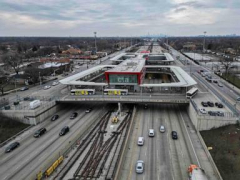“Protect Assets: Banks Need to Act Quickly When Market Values Fall Fast”
Introduction
If you were worried about mortgage payments are rising at unprecedented rapid phase, that is not the only problem you are facing. The RBA’s 9 consecutive rate increases to tame inflation, made properties lose values, as new borrowers’ eligibility is reducing by each rate increase. So the double whammy on you is imposed by RBA, not only you need to be paying more in mortgage payments may be 60 to 70% increase, but also your property is decreasing in value.
Consider this from many financial yardsticks
Cash Flow: Interest rate hike = more money going to service mortgages = less money for your expenses
Asset Value: Less buyers who are eligible to buy your property = your property looses value in the market
Liquidity: Less buyers are there to buy your property = Selling of property cannot happen normally = asset class with convertibility into liquid cash is doubtful
ONE MORE yardstick from Banks angle we will discuss after discussing the Banks’ problems.
The recent economic downturn has caused a sharp decline in the market value of mortgaged properties. This has created a difficult situation for not only the mortgagees, but also for the banks, as they must now decide how to respond to the decreased value of the properties they have loaned money against. Banks must take a proactive approach to managing their mortgage portfolios in order to protect their investments and minimise losses. This article will discuss the steps banks need to take when the market value of mortgaged property falls fast.
How Banks Can Adapt to Rapidly Changing Market Values of Mortgaged Property
The rapid changes in market values of mortgaged property can present a challenge for banks. To ensure that their investments remain secure, banks must be able to adapt to these changes. Here are some strategies that banks can use to adjust to rapidly changing market values of mortgaged property.
First, banks should regularly review their portfolio of mortgaged properties. This will allow them to identify any properties that may be at risk of declining in value. Banks should also monitor the local real estate market to identify any potential changes in market values.
Second, banks should consider refinancing mortgages when market values decline. This will allow them to reduce the amount of money owed on the mortgage and reduce the risk of default. Banks should also consider offering loan modifications to borrowers who are struggling to make their payments.
Third, banks should consider increased investments in mortgage insurance. This will provide additional protection against losses in the event of a default. Banks should also consider investing in other forms of insurance, such as title insurance, to protect against losses due to title defects.
Finally, banks should consider diversifying their investments. This will help to spread the risk of losses across multiple investments. Banks should also consider investing in other types of assets, such as stocks and bonds, to further diversify their portfolio.
By following these strategies, banks can better manage the risks associated with rapidly changing market values of mortgaged property. By monitoring their portfolio, refinancing mortgages, investing in insurance, and diversifying their investments, banks can ensure that their investments remain secure.
What Banks Can Do to Minimize Losses When Market Value of Mortgaged Property Drops
When the market value of a mortgaged property drops, banks can take several steps to minimize losses.
First, banks should review the loan portfolio regularly to identify any potential risks. This includes assessing the borrower’s creditworthiness and the current market value of the property. Banks should also consider the borrower’s ability to make payments and the likelihood of the loan being repaid.
Second, banks should consider restructuring the loan. This may involve extending the loan term, reducing the interest rate, or changing the loan type. This can help reduce the borrower’s monthly payments and make it easier for them to keep up with their payments.
Third, banks should consider offering loan modifications. This may involve reducing the principal balance, extending the loan term, or changing the loan type. This can help reduce the borrower’s monthly payments and make it easier for them to keep up with their payments.
Fourth, banks should consider offering forbearance. This involves temporarily suspending or reducing the borrower’s payments for a period of time. This can help the borrower get back on track with their payments and avoid foreclosure.
Finally, banks should consider offering short sales. This involves selling the property for less than the amount owed on the loan. This can help the borrower avoid foreclosure and minimize losses for the bank.
By taking these steps, banks can minimize losses when the market value of a mortgaged property drops.
How Banks Can Help Homeowners When Market Value of Mortgaged Property Falls
When the market value of a mortgaged property falls quickly, banks can help homeowners in a variety of ways.
First, banks can offer loan modifications. This involves changing the terms of the loan, such as the interest rate, the length of the loan, or the amount of the monthly payment. This can help homeowners who are struggling to make their payments due to the decrease in the value of their property.
Second, banks can offer forbearance. This is when the bank agrees to temporarily suspend or reduce the homeowner’s mortgage payments. This can give the homeowner some breathing room while they work to get back on their feet financially.
Third, banks can offer refinancing. This is when the homeowner takes out a new loan to pay off the old loan. This can help the homeowner get a lower interest rate or a longer loan term, which can make their payments more manageable.
Finally, banks can offer short sales. This is when the homeowner sells the property for less than the amount owed on the mortgage. The bank agrees to accept the lower amount and forgive the remaining balance. This can help the homeowner avoid foreclosure and get out from under the mortgage.
By offering these options, banks can help homeowners who are struggling with the decrease in the value of their property. It is important for homeowners to contact their bank to discuss their options and find out what assistance is available.
What Banks Should Do to Prepare for a Rapid Decline in Market Value of Mortgaged Property
In the event of a rapid decline in market value of mortgaged property, banks should take proactive steps to protect their investments.
First, banks should review their loan portfolios to identify any loans that may be at risk of default due to the decline in market value. Banks should also review their loan underwriting standards to ensure that they are not taking on too much risk.
Second, banks should consider increasing their loan loss reserves to account for any potential losses due to the decline in market value. This will help to ensure that the bank is adequately prepared for any potential losses.
Third, banks should consider restructuring existing loans to reduce the risk of default. This may include extending the loan term, reducing the interest rate, or offering a forbearance period.
Fourth, banks should consider offering loan modifications to borrowers who are struggling to make their payments due to the decline in market value. This may include reducing the principal balance, extending the loan term, or reducing the interest rate.
Finally, banks should consider offering financial counseling services to borrowers who are struggling to make their payments. This will help borrowers to better understand their options and make informed decisions about their finances.
By taking these proactive steps, banks can help to protect their investments and minimize their losses in the event of a rapid decline in market value of mortgaged property.
Strategies for Banks to Protect Against Losses When Market Value of Mortgaged Property Drops
1. Increase Loan-to-Value Ratios: Banks should increase the loan-to-value ratio of mortgages to ensure that the loan amount is lower than the market value of the property. This will help to protect the bank from losses if the market value of the property drops.
- Require Higher Down Payments: Banks should require borrowers to make higher down payments when taking out a mortgage. This will help to reduce the amount of money that the bank is lending and will reduce the risk of losses if the market value of the property drops.
- Monitor Property Values: Banks should monitor the market value of mortgaged properties on a regular basis. This will help to identify any potential losses before they occur and will allow the bank to take action to protect itself.
- Increase Risk-Based Pricing: Banks should increase the risk-based pricing of mortgages to ensure that borrowers are paying a higher interest rate for higher risk mortgages. This will help to reduce the potential losses if the market value of the property drops.
- Increase Loan Reserves: Banks should increase their loan reserves to ensure that they have enough money to cover any potential losses if the market value of the property drops.
- Increase Loan Monitoring: Banks should increase their loan monitoring to ensure that borrowers are meeting their repayment obligations. This will help to reduce the risk of losses if the market value of the property drops.How Banks Can Mitigate Risk When Market Value of Mortgaged Property Falls FastWhen the market value of mortgaged property falls quickly, banks can take steps to mitigate the risk of losses.
First, banks should review their loan portfolios to identify any loans that are at risk of default. This can be done by analyzing the borrower’s creditworthiness, the loan-to-value ratio, and the current market value of the property. If any loans are identified as being at risk, banks should take steps to reduce their exposure.
Second, banks should consider restructuring the loan terms to make them more affordable for the borrower. This could include extending the loan term, reducing the interest rate, or offering a forbearance period. By making the loan more affordable, banks can reduce the risk of default and minimize their losses.
Third, banks should consider offering loan modifications to borrowers who are struggling to make their payments. This could include reducing the principal balance, extending the loan term, or offering a lower interest rate. By making the loan more affordable, banks can reduce the risk of default and minimize their losses.
Finally, banks should consider selling the loan to another lender. This can help to reduce the bank’s exposure to losses and free up capital for other investments.
By taking these steps, banks can mitigate the risk of losses when the market value of mortgaged property falls quickly.
Banks Actions:
In conclusion, when the market value of mortgaged property falls fast, banks need to take proactive steps to protect their investments. This includes monitoring the market, assessing the risk of default, and taking steps to reduce the risk of default. Banks should also consider restructuring the loan terms to make them more affordable for the borrower, or even offering loan modifications to help the borrower stay in their home. By taking these proactive steps, banks can help protect their investments and minimize losses.
From Mortgagee Angle:
The last straw on the camel’s back is a Banker calling you to pay off a huge amount to bring it the loan within your Equity:Mortgage ratio.
Let us consider an example.
At the time of purchase and mortgatge:
Your mortgage is 800,000 – At the time of purchase – the property price was 1,000,000. So you paid 200,000 for your share as equity. So you took the loan at 20:80. The introductory 2 year interest rate for 20:80 was a cheap 2.5% at that time and 10:90 at that time was 3.2%
As declined price in the current market:
Your mortgage is still 800,000 as you took interest only loan. The property price has dropped in the market by 10% that means it is worth only 900,000. Because of the revised value, The 20:80 now mean 180,000:720,000. But Bank loan is 800,000 at the moment. So Banks by the Bank rules could send you a notice to pay immediately an amount of 80,000 (Original mortgage 800000 – current eligible mortgage amount 720000) to bring the mortgage to the original 20:80 at current market price so that your concessional interest rate of 2.5%
Now you are calling your bank and arguing that how a person can pay 80,000 all of a sudden. The banker calls you to the bank to discuss further.
At the bank the bank manager will tell you your options. a) Either you bring in 80,000 within 2 weeks by selling any other things you can so that your interest payment remains same or b) if you cant pay 80,000, they will assess you under 10:90 taking into account your servicing capabilities and current variable interest rate. The current variable interest is 5% for 20:80 and 6% for 10:90. What will happen now? She may come to some calculations and say you are eligible only for 700000 under 10:90 and ask you if you can bring in atleast 20,000 so that she can approve 10:90. If you say no she will consider if you can be fit into 5:95 – in most cases you wont fit in at all. So you are now forced to sell your property and pay off your loan. If you could manage to pay 20,000 – still banker may say interest only loan is not available; because principal+interest- your monthly mortgage payments will increase out of your serviceability (interest rate change + principal payment monthly payment). Now it is not the banker who needs to ask you to sell your property, under the circumstances, you yourself will want to sell off. In the stressed market a stressed sale is nothing but a nightmare. Sorry folks, I am not a fear monger – But this is reality of Bank mortgages.
Still I think you have some life lines. I am not any financial advisor. But I am a common man, faced common problems like you and came out.




